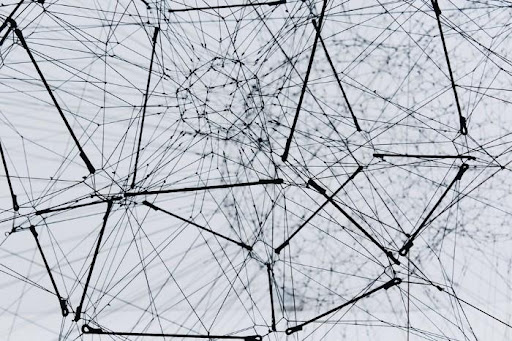Causality and Science
Last updated: Apr 29, 2023
The notion of causality is often presented without an adequate approach to the necessary philosophical foundations. As expected from a popular theme, there are controversies and misunderstandings.
There is a reason why the concept is so much discussed and instrumentalized in the health sciences. In general, we are interested in intervening to change a negative outcome or neutralize negatively influencing factors. When faced with a patient presenting an acute coronary syndrome, it is advantageous to know that inadequate myocardial perfusion is causing the symptoms. By reversing the “cause”, we also change the fate of that individual. Here, “cause” is in quotation marks, as several pitfalls surround the causality construct.
https://unsplash.com/photos/0lrJo37r6Nk

Even if it is instrumentally useful, a brief oversight is enough to reach erroneous conclusions. In particular, I recommend one to always restrict the use of this abstraction to a defined experimental paradigm.
For example, it is valid to say that, in an empirical study, reversing a certain condition caused a reduction in the number of outcomes. However, most of the time, it is wrong to say generically that the condition is the cause of the outcome. We will better understand this apparent paradox below. In particular, how the identification of causal factors generally requires restricted conditions.
This piece may be viewed as a take “against” the causal inference framework. Although this may be true to some extent, I expect this text to foster new perspectives for a judicious usage of causality in sciences. This may facilitate collaboration across health disciplines, enhance experimental designs and analysis procedures.
The first point we must understand: there are multiple definitions for causality. Some abstractions are pure enough to avoid this confusion. The most proverbial example is in entities treated by mathematics, such as real numbers, functions and sets. In contrast, causality is a relatively heterogeneous idea in philosophy.
One of the first conceptions arises with Aristotle, who defines causality in four types of explanation: matter, form, efficient (agent) and final (purpose). This text does not set out to explain the historical development of the term. References at the end of this article point to entries on causality in physics and metaphysics in the Stanford Encyclopedia of Philosophy.
https://unsplash.com/photos/7NzP4i_ej1U

To clear up the confusion, let us consider three perspectives: (1) Causality based on the counterfactual, a concept widely used in the health sciences; (2) the different levels of causality proposed by Tinbergen in ethology (the study of animal behavior); and (3) Ernst Mach’s and Bertrand Russell’s critiques of causality as a construct, revitalized by contemporaries (Neo-Machians and Neo-Russellians).
When we use the notion of counterfactuals to talk about causality, we consider the scenario in question if the relevant factor were removed. Roughly speaking, we say that a factor A is the cause of B if the neutralization/removal of A nullifies B. For example, we can say that the sweet taste in coffee exists because we added honey to it. In the counterfactual, if we had removed the step of adding honey, our coffee would have turned out to be bitter (“counter to the fact” that it was observed to be sweet after adding honey).
This instrumental definition is very important for the social and health sciences and is commonly operationalized using the aforementioned theoretical framework with potential outcomes (see Neyman, 1923; Rubin, 1974; Holland, 1986; and Imbens, 2020) and directed graphs of random variables (see Pearl, 2009). Neyman, Rubin, and Holland’s early work, and Pearl’s recent work, formalize causality for some empirical applications.
In the statistics tradition, the Neyman-Rubin-Holland framework calls counterfactuals “potential outcomes”, and is largely focused on statistically estimating and inferring the effect of an actual or would-be randomized intervention. Pearl uses directed acyclic graphs (DAGs) to model the relationship between random variables. Both are powerful tools to explain emergent correlations between empirical measures, allowing the calculation of effects attributed to interventions and health risk factors.
https://unsplash.com/photos/ZiQkhI7417A

Although the causal approach presents an admirable platform for scientific research, great care is needed when using it.
Specifically, it is easy to forget that the choice of elements for this description of reality is arbitrary. That is, even if a factor works as a causal agent in a certain conceived model, it is important to know that the model itself contains elements that do not correspond to the real phenomenon. In other words, there is an infinite variety of possible models.
It is more appropriate to think of explanations specific to a context. That is, to speak of causality requires that the model of reality used be specified beforehand.
In the cult classic of German cinema “Run Lola Run” (German: Lola rennt, lit. “Lola Runs”, 1998), we follow the protagonist in several alternative realities. Again and again, the story loops back to the beginning, and something slightly different happens. For example, in a first narrative, Lola passes by a man and his dog. In an alternate reality, Lola bumps into them. The aim of the film is to show how small changes to the timeline can have huge long-term effects.
Mathematics treats such systems as “chaotic”, that is, systems in which small perturbations in the initial conditions generate large differences in the final state. Formally, this is measured using Lyapunov exponents, but we don’t want to go that deep for now. Here, just keep this question in mind: “Could the flapping of a butterfly’s wings in South America cause a hurricane in Japan”?
https://unsplash.com/photos/IBhsB71R97k

Therefore, in most real phenomena, it is impossible to establish an unequivocal relationship between the complex reality and elements that we elaborate to compose our description. It is possible to consider infinite factors whose counterfactuals would nullify (or guarantee) an empirical observation.
Returning to the case of sweetened coffee, we can think, from an Aristotelian point of view, that the sweet flavor has the presence of honey as its material cause. On the other hand, we can also think of other “causes” depending on the perspective adopted and the ontology (e.g. different categories) of the elements we want to use. Thinking about social dynamics, we can think that the “cause” for sweetened coffee at the breakfast table is the visit of a distant relative who likes to drink it that way, while the residents of the house prefer bitter coffee. Note that the two causes are not incompatible: not adding honey (material cause) would be enough (counterfactual) for us not to have sweet coffee. Likewise, the absence of the distant relative would have the same effect. As stated earlier, the hypothetical chain of elements influencing the outcome is limited only by our imagination. An economist might also associate the sweetness of coffee with the affordable price of honey in that region. That is, unaffordable prices would also configure a counterfactual culminating in bitter coffee.
This pluralism is the cause (pun intended) for the Aristotelian conception at different scales or levels of explanation. In economics, macro and micro economics study factors at different scale. When we think of animal physiology, it is worth mentioning Tinbergen, an ethologist who proposed a similar hierarchy. When reflecting on a certain attribute, Tinbergen posits 4 levels of understanding:
(1) adaptive function; (2) phylogenetic history; (3) underlying physiological mechanisms and (4) developmental history (ontogenesis).
Thinking about the spots on a jaguar, what causes them to exist? We can say that they exist because they favor survival through camouflage (adaptive function). We can also say that jaguars are a phylogenetic branch of another feline with similar spots, which are, therefore, an inheritance with random modifications. Without contradictions, we can say that dark spots reflect light differently because hairs have more dark pigments. Finally, we can also consider that the spots are caused by the differential expression of melanin-related genes according to a specific molecular cascade mediated by hormones.
I hope that little by little it becomes clear to the reader: establishing causal factors in a phenomenon says more about its model of reality than about the phenomenon itself. These are what Norton (a “Neo-Russellian”) calls dominant causes.
https://unsplash.com/photos/RgKsNlZJH8s

Skinner would very much like this discussion. According to him, the use of mental constructs (e.g., emotions, thoughts) has no place in behavioral science. Radical behaviorists advocate constructing a model of reality by eliminating such jargon concepts completely (eliminativism). This does not mean that they deny the existence of emotions and thoughts as phenomena, but rather that they are not part of an ideal model of reality.
Note that by saying “thoughts do not cause behavior”, Skinner does not imply that mental states are uncoupled from observable behavior. Again, the choice of an ontology for the causal factors says more about the theoretical model proposed by Skinner (e.g., ontology of valid dominant causes). Emotions and thoughts would be inadequate concepts, or pseudo-phenomena. This dangerous conflation of concepts led to a misunderstanding between cognitivists (in particular Noam Chomsky) and behaviorists that lasted (or does it?) for decades.
Specifically, certain generic and blunt assertions made within a paradigm tend to shock those outside the paradigm. This happened in the famous clash between Chomsky and Skinner. For a cognitivist, it is odd to hear that hunger does not cause foraging behavior.
https://youtu.be/QgjUuW_gaBU?t=79

Indeed, this confusion from a lack of specificity in defining causality is often present in academic discussions. For example, it is common to follow headlines and warm declarations about blunt discoveries related to diseases.
“Discovery of the cause of Alzheimer’s”. “Researchers demonstrate that depression has a genetic cause”. “The cause of obesity is genetic and not in eating habits.” “The cause of mental disorders is in the brain”…
The list is immense. In this sense, it is worth revisiting history to understand the context of the various schools of thought that influenced science and the notion of causality.
For example, the hermetic traditions that preceded science as we know it already have something reductionist in their essence. The alchemical motto “solve et coagula” (dissolve and coagulate) refers to the idea of separating entities into smaller parts to understand their functioning. The evolution of reductionism as a standard approach in science was even more highlighted with the crystallization of “causality” as an important abstraction. While offering a set of standardized processes for considering ideas, the idea of “cause” systematizes studies and, consequently, can also blind researchers to a broader view. So, it becomes common to subvert the main objectives. We restrict the space of models of reality based on a simple grammar underpinned by causality, a grammar that makes implicit ontological assumptions about what constitutes important causes and effects and how they act.
The mathematician and philosopher Bertrand Russell wrote, in 1912, the article “On the Notion of Cause”, listing limitations of the idea of causality to describe physical phenomena. Another important polymath, Ernst Mach, was influential in reconsidering classical notions of causality. Many credit him with the conceptual foundations that allowed the unorthodox descriptions arising from the Theory of Relativity.
The Stanford encyclopedia entries linked in the references are a good source summarizing the challenges involved in adopting any notion of causality to explain physical reality, as posed by contemporary philosophers (e.g., Neo-Russellians, or Neo-Machians). In addition to problems with dominant causes and vague definitions, some obstacles to adopting causality include assumptions of determinism, locality, and temporal asymmetries.
https://www.nationalgeographic.com/culture/article/100104-isaac-newton-google-doodle-logo-apple

An interesting anecdote is related to Isaac Newton in his Principia (Philosophiæ Naturalis Principia Mathematica). Many contemporaries questioned Newton as to the reasons behind the described properties of motion. In the second edition of the work (1713), an essay (General Scholium) was added, containing the following extract:
I have not as yet been able to discover the reason for these properties of gravity from phenomena, and I do not feign hypotheses.
I do not feign hypotheses is best known in the Latin form, Hypotheses non fingo. Chronologically, Newton predates Russell’s deeper discussions of causality by centuries, but we note an aversion to reductionism about specific causal factors. He prioritized other features.
It is interesting to contrast his motivations with that of many contemporary researchers who work in the shadow of the causal paradigm in social and biological sciences. These study very complicated entities, including the functioning of highly complex social (e.g., economic dynamics, econometrics) and biological (e.g., human body) phenomena. On the one hand, this is a reasonable premise for accepting some pessimism about the possibility of more global models. Thus, it seems appropriate to accept reductionism in limited contexts.
In the light of the previous arguments, we know that there are infinite possibilities of reductionist conceptualizations (e.g., dominant causes). By now, the reader probably has realized that the task of discovering true causes is futile. At best, we can discover context-dependent causes.
Is the existence of honey to blame for the sweetened coffee on the table? If one wants to eliminate the sweetened coffee on your table, perhaps the solution is to wipe honey off the face of the earth. Or perhaps the cause is that the price is too affordable, so the solution is to raise taxes on honey. Or even distant relatives fraternizing may be causing the sweetened coffee. In that case, better recommend social isolation.
What about chronic back pain, what is the cause? Could it be the evolutionary adaptations of Homo sapiens to walking upright? Would it be an inadequate posture sustained for a long time at work? Perhaps an exceptional effort made when moving around? But, then, would the cause be the effort (a proximate cause) or the lack of previous muscular strengthening (a distal cause)?
A frequent reservation is that phenomena are “multicausal” or exhibit a “multifactorial cause”. However, this often expresses the underlying belief that it would be possible to exhaustively enumerate the possible causes for the phenomenon. As we have seen, they are actually potentially infinite, limited by our imagination and the chosen model of reality.
It is clear that I am sympathetic to Russell and Mach’s views about the limitations of causality in science. Nonetheless, this does not negate the usefulness of discovering causes in context with the goal of intervening. Not by chance, we are often looking for “reversible” causes in the social and health sciences.
Causal inference is a good reductionist approach in operationalizing certain experimental models. It is one of the most reliable tools for clinical studies (e.g., we did this analysis using DAGs and Bayesian inference: https://www.sciencedirect.com/science/article/abs/pii/S0306460321003166) .
In fact, we’re happy to note that a dedicated group of applied health philosophers have been considering the importance and nature of causal pluralism as it applies to the health sciences and patients themselves. You can check out their blog here, and their key text here.
On the other hand, it is not an inspiring platform for understanding phenomena in their most fundamental characteristics. Due to its pragmatic nature, causal grammar often constitutes a barrier between the researcher and the subtlest essence of reality.
- Neyman, Jerzy S. “On the application of probability theory to agricultural experiments. essay on principles. section 9.(tlanslated and edited by dm dabrowska and tp speed, statistical science (1990), 5, 465-480).” Annals of Agricultural Sciences 10 (1923): 1-51.
- Rubin, Donald B. “Estimating causal effects of treatments in randomized and nonrandomized studies.” Journal of educational Psychology 66.5 (1974): 688.
- Holland, Paul W. “Statistics and causal inference.” Journal of the American statistical Association 81.396 (1986): 945-960.
- Imbens, Guido W. “Potential outcome and directed acyclic graph approaches to causality: Relevance for empirical practice in economics.” Journal of Economic Literature 58.4 (2020): 1129-79.
- Pearl, Judea. (2009). Causality. Cambridge university press.
- Frisch, Mathias, “Causation in Physics”, The Stanford Encyclopedia of Philosophy (Spring 2022 Edition), Edward N. Zalta (ed.), https://plato.stanford.edu/archives/spr2022/entries/causation-physics/.
- In particular, session ‘2. (Neo)-Russellian Challenges presents arguments against the use of causality’. The session 3. Interventionist accounts of causation addresses the conception of Judea Pearl.
- Gallow, J. Dmitri, “The Metaphysics of Causation”, The Stanford Encyclopedia of Philosophy (Fall 2022 Edition), Edward N. Zalta & Uri Nodelman (eds.), https://plato.stanford.edu/archives/fall2022/entries/causation-metaphysics/.
- Argôlo, Felipe Coelho. “Invariantes temporais do comportamento na dicotomia Kraepliniana: análise de discurso livre, estados afetivos, experiências psicóticas e possibilidades terapêuticas.” (2021).
- Sonnert, Gerhard (2005). Einstein and Culture (illustrated ed.). Humanity Books. ISBN 978–1–59102–316–6.
- Popper, K. R. (2004). A lógica da pesquisa científica. Editora Cultrix.
- Dawid, A. P. (2010, February). Beware of the DAG!. In Causality: objectives and assessment (pp. 59–86). PMLR.
- Anjum, Rani Lill, Samantha Copeland, and Elena Rocca. Rethinking Causality, Complexity and Evidence for the Unique Patient: A CauseHealth Resource for Healthcare Professionals and the Clinical Encounter. Springer Nature, 2020.
Felipe C. Argôlo, M.D., Ph.D., is a postdoctoral researcher investigating human behavior. He works with mathematical modeling and statistical inference. You can find out more about Felipe at https://fargolo.github.io/, and reach him at felipe[DOT]c[DOT]argolo[AT]gmail[DOT]com.
- Papers: https://scholar.google.com/citations?user=XR4ot-cAAAAJ&hl=en
- Textbook on statistical inference: PT-BR: https://leanpub.com/cienciadados
- Open-source software: https://www.youtube.com/watch?v=1Dufbmm9sqc
